You are using an out of date browser. It may not display this or other websites correctly.
You should upgrade or use an alternative browser.
You should upgrade or use an alternative browser.
Let's see those Manual Focus lenses
- Thread starter gqtuazon
- Start date
@Marcel, which focusing screen does 600 fall in with? I know Nikon groups them together per similar dimensions of the cameras. I might just see if I can procure me one of the split-prisms off ebay like I did with my 5100.
Else,
I don't remember exactly, but it's not a split-screen one. It's basically a prism center. There was less choices for the D600 if I remember correctly. I did get it from Focusing Screen. The screen seems to be easier to focus with even outside the prism area. It's not as transparent as the original one so you see more of the screen than through it. This makes it quite easier to focus with 1.4 and 1.2 lenses.
Bob Blaylock
Senior Member
Nikon claims that no DSLR other than their DF model can use non-AI lenses. My D3200, the three lenses pictured below, and I, very much disagree with Nikon on this point. These are all late 1960s or early 1970s vintage lenses, and all of them work just fine on my D3200, albeit with some obvious and expected limitations.
As with @Marcel, I've installed a third-party focusing screen in my D3200, to better work with these old manual lenses, as it is very difficult to focus them well using the stock focusing screen that comes in the D3200.
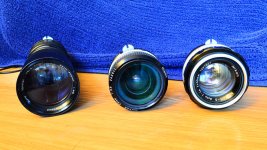
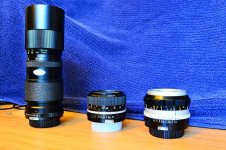
Here is a random assortment of pictures, each one taken with one of these lenses, mounted to my D3200.



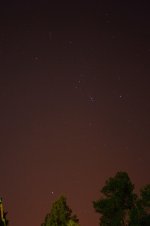

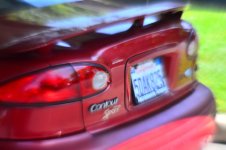

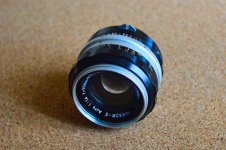
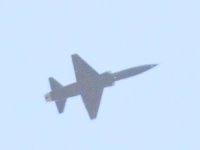
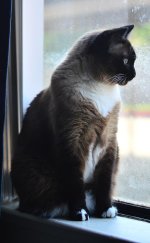




As with @Marcel, I've installed a third-party focusing screen in my D3200, to better work with these old manual lenses, as it is very difficult to focus them well using the stock focusing screen that comes in the D3200.


Here is a random assortment of pictures, each one taken with one of these lenses, mounted to my D3200.














Last edited:
That's a fantastic image in all respects -- artistically, technically, not to mention, the model is easy on the eyes! Great job!
That is not entirely true. Nikon says the lenses will not meter, but they will work in fully manual mode - focus, aperture and speed.Nikon claims that no DSLR other than their DF model can use non-AI lenses. My D3200, the three lenses pictured below, and I, very much disagree with Nikon on this point. These are all late 1960s or early 1970s vintage lenses, and all of them work just fine on my D3200, albeit with some obvious and expected limitations.
Nikon | Imaging Products | Lens Compatiblity - Nikon D3000
Bob Blaylock
Senior Member
That is not entirely true. Nikon says the lenses will not meter, but they will work in fully manual mode - focus, aperture and speed.
Nikon | Imaging Products | Lens Compatiblity - Nikon D3000
I do not see where the page to which you provided a link says anything about non-AI lenses, or about lenses that Nikon claims cannot be used at all with the D3000.
The link which I gave earlier has a table of different old lens types, and an explanation for each type as to what compatibility they do or do not have with modern DSLRs. The very first entry on that table is “Non-AI lenses”, and it has this to say about them:
Nikkor-Q, -P, -H type, and other non-AI lenses were designed long before digital cameras and cannot be used on any D-SLR or late model film SLR, with the exception of the new Df.
The Nikon Df body allows for connection of most Non-AI lenses through the use of a newly designed Meter Coupling Lever, which has a hinged tab that folds down for connecting Non-AI lenses.
The Nikon Df body allows for connection of most Non-AI lenses through the use of a newly designed Meter Coupling Lever, which has a hinged tab that folds down for connecting Non-AI lenses.
In any event, my three non-AI lenses, my D3200, and I do not agree with what Nikon has to say on the subject. These lenses work just fine on my D3200, albeit with the same obvious and expected limitations that apply to all non-CPU lenses. You do know that “non-AI” and “non-CPU” do not mean anything close to the same thing, right?
For the D3xxx series all non CPU lenses are clubbed together in the second table. As far as I can make out the difference between AI and non AI lenses is the mechanical linkages used to detect the maximum aperture of the lense, and in case of AIS lens control it.
https://support.nikonusa.com/app/an...en-an-ai-lens,-an-ai-s-lens,-and-non-ai-lens?
As the D3xxx series can not even meter with the non CPU lenses, detecting and controlling the aperture is not even considered. That is why Nikon has clubbed all non CPU lenses together for D3xxx lens compatibility.
In my opinion Nikon could have provided metering to the D3xxx series if it allowed input of maximum aperture of the lense. I have checked - when any lense with "automatic aperture" is mounted, the aperture opens up fully; irrespective of where the aperture ring is set; and closes when the shot is taken. Which means that if the maximum aperture is known then the body can meter.
https://support.nikonusa.com/app/an...en-an-ai-lens,-an-ai-s-lens,-and-non-ai-lens?
As the D3xxx series can not even meter with the non CPU lenses, detecting and controlling the aperture is not even considered. That is why Nikon has clubbed all non CPU lenses together for D3xxx lens compatibility.
In my opinion Nikon could have provided metering to the D3xxx series if it allowed input of maximum aperture of the lense. I have checked - when any lense with "automatic aperture" is mounted, the aperture opens up fully; irrespective of where the aperture ring is set; and closes when the shot is taken. Which means that if the maximum aperture is known then the body can meter.
Bob Blaylock
Senior Member
For the D3xxx series all non CPU lenses are clubbed together in the second table. As far as I can make out the difference between AI and non AI lenses is the mechanical linkages used to detect the maximum aperture of the lense, and in case of AIS lens control it.
https://support.nikonusa.com/app/an...en-an-ai-lens,-an-ai-s-lens,-and-non-ai-lens?
As the D3xxx series can not even meter with the non CPU lenses, detecting and controlling the aperture is not even considered. That is why Nikon has clubbed all non CPU lenses together for D3xxx lens compatibility.
In my opinion Nikon could have provided metering to the D3xxx series if it allowed input of maximum aperture of the lense [sic]. I have checked - when any lense [sic] with "automatic aperture" is mounted, the aperture opens up fully; irrespective of where the aperture ring is set; and closes when the shot is taken. Which means that if the maximum aperture is known then the body can meter.
I say again that the link which you provided earlier says nothing about non-AI lenses. It does not include them “clubbed together” with AI lenses. All the lens types mentioned at that link are AI lenses. It lists the varieties of non-CPU lenses that are compatible with the D3000, all of which are AI lenses. It does not list any that are claimed to be completely incompatible therewith. If it did, and if Nikon was consistent with what it claims elsewhere, then the list of lenses claimed to be completely incompatible would include non-AI lenses.
Here's page 169 of the manual that came with my D3200. Note that none of the lenses claimed to be completely incompatible are mentioned at your link to lenses compatible with the D3000.
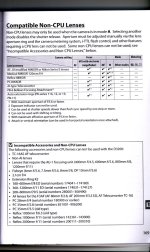
And, as I said before, I disagree with Nikon on this point. You are correct, that the distinction between AI and non-AI lenses has to do with the mechanics of how the aperture ring is coupled to the camera, though type-G lenses, which do not even have an aperture ring, are apparently considered to be “AI” lenses. The D3??? cameras do not recognize any mechanical aperture ring coupling, so it really makes no difference to them whether the lens is AI or non-AI; and in fact, non-AI lenses seem to work just fine, with exactly the same limitations as non-CPU AI lenses.
The “CPU” designation, of course, refers to the electronics in the lens, and the means of electronically communicating between the lens and the camera.
SkvLTD
Senior Member
Any body that has the ability to couple with the manual aperture ring to help with exposure will need Ai cutout or you'll break that coupling piece/lens won't mount. IF you don't have that like everything <7x00 series, no worries whatsoever but no metering or any help from camera past focus dot. D3 may be able to meter just through lens/manual input of the lens' stats?
Anyways,
Anyways,

Fred Kingston_RIP
Senior Member
I have a non-AI lens. 55mm f1.2 I had it modified to keep it from breaking the aperture lever..
It works fine on my D300 and D600... within the scope of the definition of "works"...
It meters correctly... it is manual focus, and you have to manually adjust the aperture ring...
It works fine on my D300 and D600... within the scope of the definition of "works"...
It meters correctly... it is manual focus, and you have to manually adjust the aperture ring...
F & F2 Man
Senior Member
Okay, there seems to be some confusion about the camera mount and the lens mount configuration.
Cameras that have a permanently placed AI pin on the lens mount cannot Mount any non AI lenses, because when you mount the lens, the lens will tear off the AI pin on the camera lens mount. That's why on the early hybrid F Mount cameras, the Nikon FM the Nikon Fe the Nikon F3 and I believe the Nikon F4 which is not really a hybrid camera mount at that point, has a fold-up type AI pin on the camera's lens mount via a small push button that allows the AI pin on the camera to be out of the way so the lens has clearance to mount when you turn it in locking position.
Because it's very difficult now to find a eye conversion kits for the old lenses, the person would have to literally cutaway a small portion of the lens mount so that there is a ridge that is left on the lens in the correct position of the AI pin on the camera.
So, a non AI lens does not have the ridge that extends off the mount for about 1/6 or so, of the lenses diameter.
So in review, the camera's lens mount must have a fold-up AI pin in order to mount a non AI lens or the camera's lens mount type in will be damaged, or the older lens mount on the lens will have to be modified by cutting most of it away for about an eighth of an in-depth except for where the AI pin would connect. Which I don't want to do these are classic lenses and I will not mutilate the mount. If I could find AI conversion kits for these lenses that would be great, but the chance of that is near zero at this point in time.
Sent from my SM-G955U using Tapatalk
Cameras that have a permanently placed AI pin on the lens mount cannot Mount any non AI lenses, because when you mount the lens, the lens will tear off the AI pin on the camera lens mount. That's why on the early hybrid F Mount cameras, the Nikon FM the Nikon Fe the Nikon F3 and I believe the Nikon F4 which is not really a hybrid camera mount at that point, has a fold-up type AI pin on the camera's lens mount via a small push button that allows the AI pin on the camera to be out of the way so the lens has clearance to mount when you turn it in locking position.
Because it's very difficult now to find a eye conversion kits for the old lenses, the person would have to literally cutaway a small portion of the lens mount so that there is a ridge that is left on the lens in the correct position of the AI pin on the camera.
So, a non AI lens does not have the ridge that extends off the mount for about 1/6 or so, of the lenses diameter.
So in review, the camera's lens mount must have a fold-up AI pin in order to mount a non AI lens or the camera's lens mount type in will be damaged, or the older lens mount on the lens will have to be modified by cutting most of it away for about an eighth of an in-depth except for where the AI pin would connect. Which I don't want to do these are classic lenses and I will not mutilate the mount. If I could find AI conversion kits for these lenses that would be great, but the chance of that is near zero at this point in time.
Sent from my SM-G955U using Tapatalk
Fred Kingston_RIP
Senior Member
AI Conversions for Nikon Lenses: Effective, Fast and Affordable!
I would check with John White at the above link before making the assertion that conversion kits weren't available...
I would check with John White at the above link before making the assertion that conversion kits weren't available...
Fortkentdad
Senior Member
I did a little photo walk with my 8 years old daughter today. I armed myself with 4 manual focus prime lenses and she had her brand spanking new AF-S VR 18-105. I am not sure about forum regulations regarding number of images, so just to be on the safe side I divided these photos in several posts.
The lenses I had were:
Nikkor AI 50mm f/1.8
Nikkor AI 55mm f/1.2
Nikkor AI 58mm f/1.2 Noct
Nikkor AI-S 105mm f/2.8 Micro
I did not correct or edit the images. All the softness, chromatic aberrations, purple fringing, pincushion and barrel distortions, vignetting and flare and glare and whatnot are still there. All the faults are present in their full glory. Plus my focusing errors that I did not try to hide with sharpening. Somehow flickr seems to eat the EXIF but I divide these images by lens and print the aperture used in every shot.
First the Nikkor AI 50mm f/1.8 (long nose version). This lens probably has the second best bokeh of any Nikon 50mm lens (even if we include all the f/1.2, f/1.4, f/1.8 and f/2 versions). The best bokeh prize goes to Nikkor AI 50mm f/2.

AI 50mm f/1.8 @ f/1.8

AI 50mm f/1.8 @ f/8

AI 50mm f/1.8 @ f/1.8

AI 50mm f/1.8 @ f/1.8

AI 50mm f/1.8 @ f/1.8
The lenses I had were:
Nikkor AI 50mm f/1.8
Nikkor AI 55mm f/1.2
Nikkor AI 58mm f/1.2 Noct
Nikkor AI-S 105mm f/2.8 Micro
I did not correct or edit the images. All the softness, chromatic aberrations, purple fringing, pincushion and barrel distortions, vignetting and flare and glare and whatnot are still there. All the faults are present in their full glory. Plus my focusing errors that I did not try to hide with sharpening. Somehow flickr seems to eat the EXIF but I divide these images by lens and print the aperture used in every shot.
First the Nikkor AI 50mm f/1.8 (long nose version). This lens probably has the second best bokeh of any Nikon 50mm lens (even if we include all the f/1.2, f/1.4, f/1.8 and f/2 versions). The best bokeh prize goes to Nikkor AI 50mm f/2.

AI 50mm f/1.8 @ f/1.8

AI 50mm f/1.8 @ f/8

AI 50mm f/1.8 @ f/1.8

AI 50mm f/1.8 @ f/1.8

AI 50mm f/1.8 @ f/1.8
Part 3 of photo walk
Nikkor AI 58mm f/1.2 Noct
Not the sharpest lens wide open and the sharpness falls quickly outward from center. Obviously wide open sharpness was never the design goal, but complete lack of coma and astigmatism instead. Still one of a kind lens. Very strong contrast even at f/1.2.

AI 58mm f/1.2 Noct @ f/1.2

AI 58mm f/1.2 Noct @ f/1.2

AI 58mm f/1.2 Noct @ f/1.2
Nikkor AI 58mm f/1.2 Noct
Not the sharpest lens wide open and the sharpness falls quickly outward from center. Obviously wide open sharpness was never the design goal, but complete lack of coma and astigmatism instead. Still one of a kind lens. Very strong contrast even at f/1.2.

AI 58mm f/1.2 Noct @ f/1.2

AI 58mm f/1.2 Noct @ f/1.2

AI 58mm f/1.2 Noct @ f/1.2
Photo walk part 4
Nikkor AI-S 105mm f/2.8 Micro
Never intended for infinity focus or even moderate distances, but hey, rules are meant to be broken!

AI-S 105mm f/2.8 Micro @ f/2.8

AI-S 105mm f/2.8 Micro @ f/2.8

AI-S 105mm f/2.8 Micro @ f/8

AI-S 105mm f/2.8 Micro @ f/4

AI-S 105mm f/2.8 Micro @ f/2.8

AI-S 105mm f/2.8 Micro @ f/2.8
Nikkor AI-S 105mm f/2.8 Micro
Never intended for infinity focus or even moderate distances, but hey, rules are meant to be broken!

AI-S 105mm f/2.8 Micro @ f/2.8

AI-S 105mm f/2.8 Micro @ f/2.8

AI-S 105mm f/2.8 Micro @ f/8

AI-S 105mm f/2.8 Micro @ f/4

AI-S 105mm f/2.8 Micro @ f/2.8

AI-S 105mm f/2.8 Micro @ f/2.8













